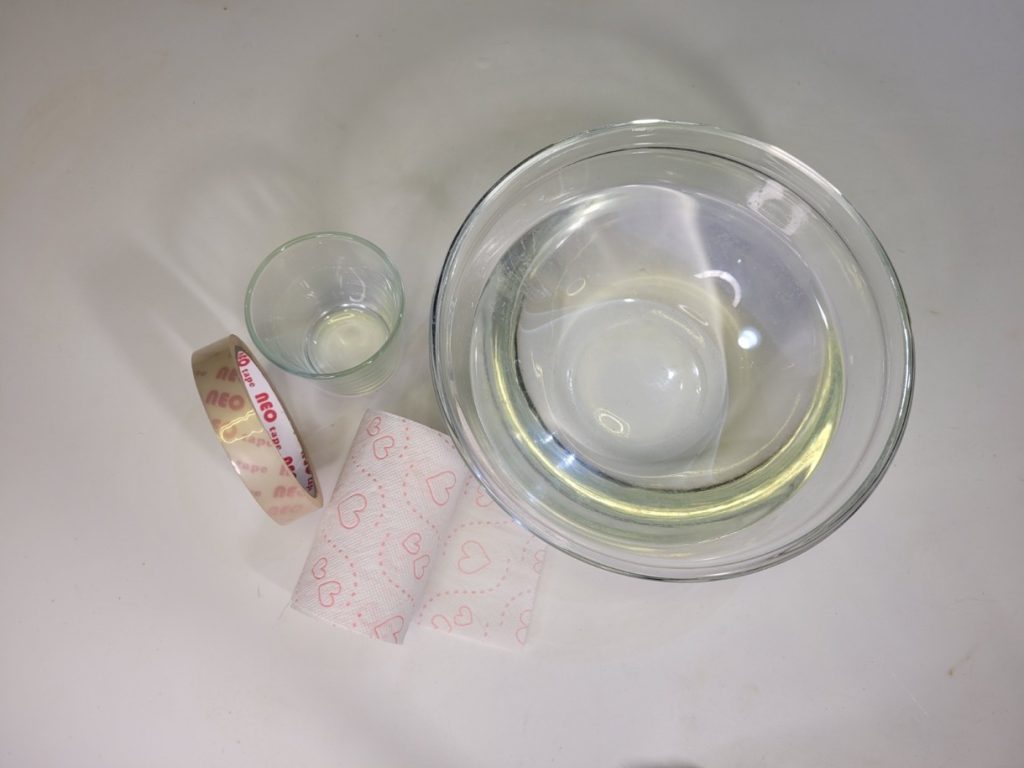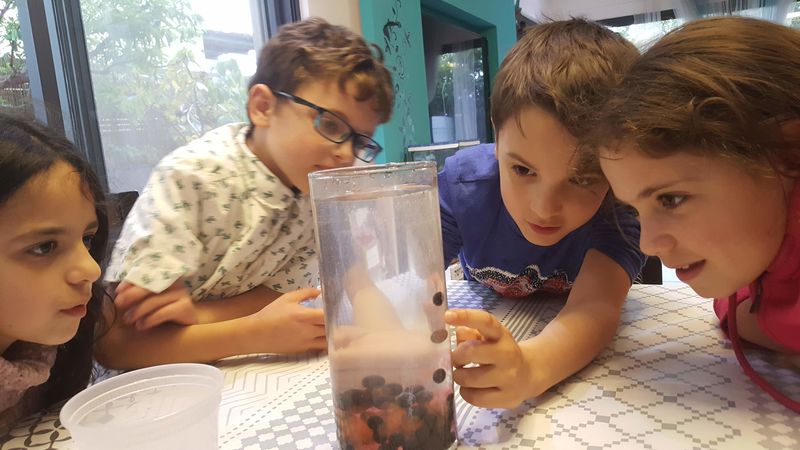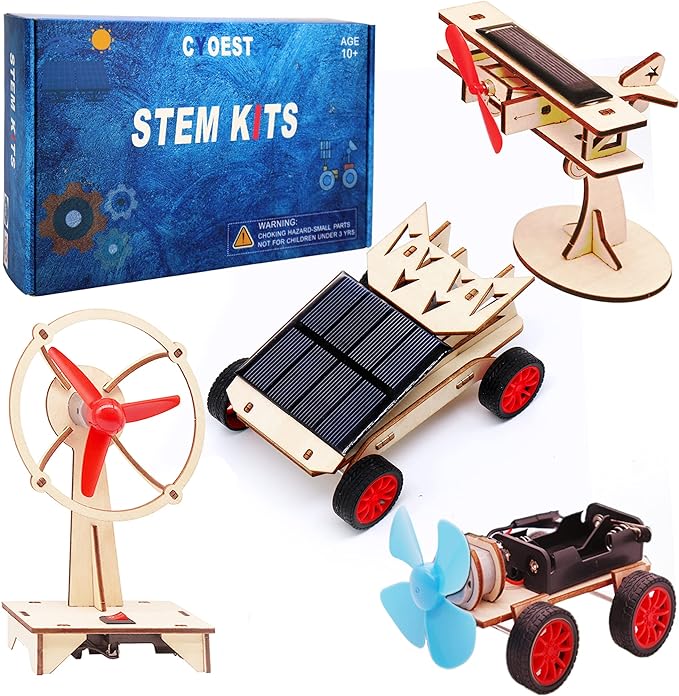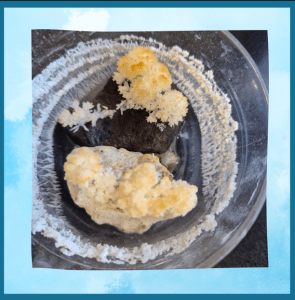Dry paper in water
In this activity, we’re going to explore a fascinating aspect of physics and discover how air, even though invisible and often forgotten, plays a crucial role in our world. We’ll create a scenario that mimics a diving bell’s basic concept. This experiment is not only fun but also an excellent way to understand how air can be trapped and used as a barrier against water, a principle used in various technologies, from submarines to the intriguing behavior of certain aquatic spiders. So let’s dive in and see science in action!
Materials:
- Abowl with water
- Toilet paper
- A glass cup
- Tape
What to do?
- Cut 4 squares of toilet paper and roll them into a ball.
- Stick the ball to the bottom of the cup with tape.
- Fill the bowl with water.
- Immerse the cup upside down in the bowl until the water covers the cup.
- Remove the cup.
- Did the paper get wet?


How does this happen?
In this experiment, we see a paper ball taped to the bottom of an empty cup, and the cup is submerged in water. Despite the cup being open, water does not enter and does not wet the paper.
Why is this happening?
Although it seems like the cup is empty, in reality, it is completely filled… with air.
It’s hard for us to see or feel air, but it’s a material that occupies space. When the cup is turned upside down in the water, the air inside cannot escape. It resists the water and prevents it from entering the cup.
Based on this idea, the first submarines, known as diving bells, were invented. A diving bell works in a similar way to our cup, but it’s large enough for one or more people to sit inside. Diving bells were used for underwater work, with documentation of diving bells in China over two thousand years ago. Even today, diving bells are still used for various purposes and can dive up to 300 meters below sea level.
Fun fact:
The diving bell spider also uses this principle to breathe underwater. The spider builds a dome made of webs under water and brings air to it through special hairs on its abdomen, allowing it to breathe underwater for extended periods while waiting for its prey.
We’d love to showcase your creativity!
Share pictures of your experiments with us, and together, we can inspire young scientists everywhere!













